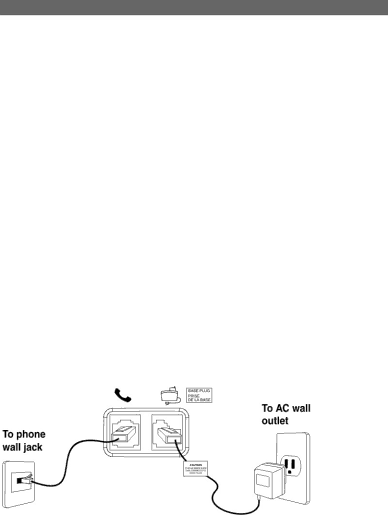
GETTING STARTED
Choosing a location for the base unit and handset cradle
The base unit records and displays the indoor temperature, when selecting a location, observe the following guidelines:
∙ Choose a location that provides easy access to a
∙ Choose a location that will allow the telephone cable to reach a telephone jack. You can use an extension jack or cable if necessary.
∙ Place the base unit as high as possible to get a better radio frequency range with the handset. You may need to try several locations – such as upstairs, or near a
∙ Do not place the base unit near a sink, bathtub, or shower.
∙ Do not place the base unit near objects that may cause radio interference, such as another telephone, large metal objects such a mirror or filing cabinet, or electrical appliances such as an electric stove, washing machine, microwave oven, television, and fluorescent lights.
∙ Do not place the unit near heat sources such as radiators or air ducts, or in a place subject to direct sunlight.
Connecting the base unit
1.Plug the AC adaptor into the power jack at the back of the base. Plug the other end into an electrical outlet.
2.Plug the telephone line cord into the tel. line jack at the back of the base. Plug the other end into a modular phone jack.
Note: Two adapters are shipped with this product. Please check the label on the adapter to make sure you are using the right one.
6